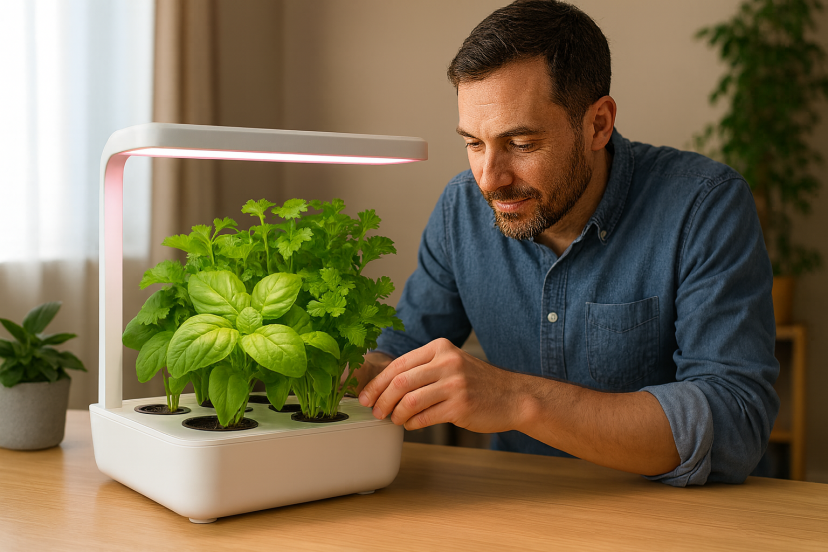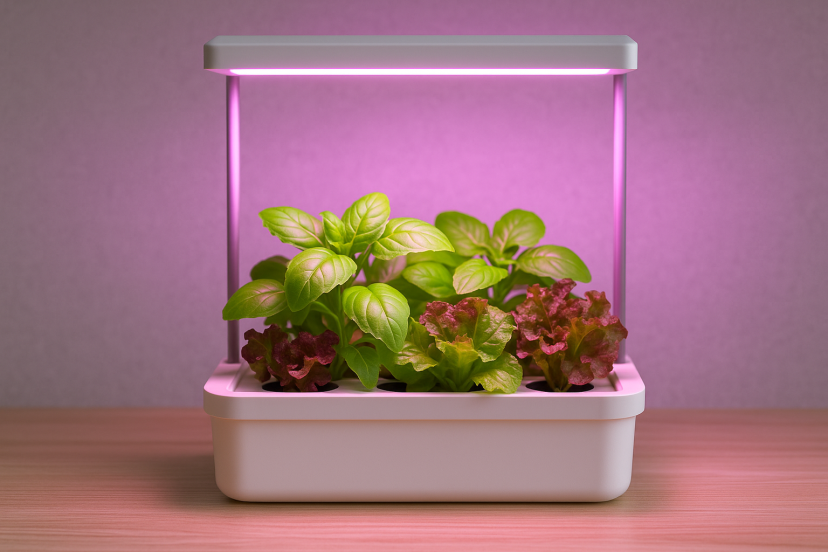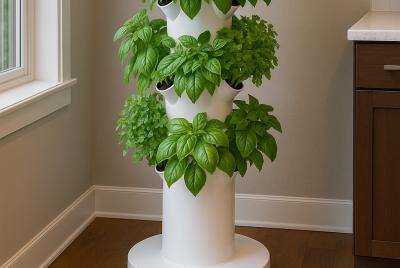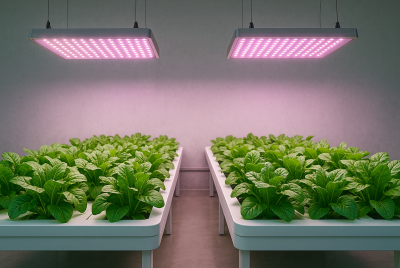Best Plants for Hydroponics: Top Picks for Your Indoor Garden
We may earn a commission for purchases made using our links. Please see our disclosure for more details.
Starting a hydroponic garden is much easier when you begin with the right plants. If you’re exploring the best plants for hydroponics, you’ll be glad to know that some varieties naturally grow faster, stay healthier, and produce more in water-based systems than they do in soil. These plants adapt quickly, require less maintenance, and give you consistent results—making them perfect for anyone building an efficient indoor garden.
Why Hydroponic Gardening Is Perfect for Indoor Growers
Hydroponics is becoming the go-to method for indoor gardeners, and once you understand the “why,” it makes perfect sense.
Faster Growth and More Predictable Harvests
One of the biggest perks of hydroponics is speed. Without soil holding them back, plants have immediate access to everything they need—nutrients, oxygen, and water. They waste zero energy searching for resources, which means they can dedicate more energy to growing leaves, roots, and fruit.
Cleaner, Easier, and More Sustainable
No soil means no muddy cleanup, fewer pests, fewer fungus issues, and a more controlled growing environment. You can grow herbs, greens, and even fruits without turning your kitchen or grow room into a dirt zone.
Perfect for Small Homes and Apartments
Hydroponics shines in small spaces. Vertical systems, compact countertop units, or simple deep-water culture buckets can fit just about anywhere. You don’t need natural sunlight or a huge yard—you just need a light source and the right plants.

What Makes a Plant Thrive in Hydroponics?
While hydroponics is incredibly flexible, some plants simply adapt better and grow faster in water-based systems. Here’s why:
They Have Adaptable Root Systems – Plants with fibrous or compact root structures—like leafy greens and herbs—do extremely well because their roots oxygenate more easily and absorb nutrients fast.
They Grow Quickly – Fast-growing plants respond incredibly well to hydroponics. Instead of waiting 60–90 days for greens to mature, hydroponic systems often cut that timeline in half.
They Don’t Need Extreme Heat or Soil Depth – Plants that can grow in moderate light without burying deep roots are the easiest and most successful choices.
The Best Plants for Hydroponics
These plants are easy to grow, quick to produce, and perfect for beginners or seasoned hydroponic growers.
1. Basil
Basil is the superstar of hydroponic herbs. It grows fast, thrives in nutrient-rich water, and produces incredibly fragrant leaves. Because basil loves warmth and moderate light, it flourishes under LED grow lights.
Hydroponic basil also tends to develop stronger flavors, which makes it ideal for pesto lovers or anyone who cooks frequently.
2. Lettuce
Lettuce is practically made for hydroponics. It grows rapidly, has shallow roots, and doesn’t demand intense light. You can harvest outer leaves continuously or cut entire heads—both approaches work beautifully.
Plus, lettuce rarely experiences nutrient deficiencies in hydroponics, which makes it a confidence-boosting plant for beginners.
3. Spinach
Spinach grows surprisingly well hydroponically, especially in cooler indoor climates. Because it appreciates consistent moisture and oxygenation, hydroponic systems help it develop large, vibrant leaves with excellent texture.
If your home stays between 65–72°F, your hydroponic spinach will reward you with nutrient-dense harvests week after week.
4. Cherry Tomatoes
If you want something a bit more exciting than leafy greens, cherry tomatoes are a rewarding choice. With the right lighting and nutrient support, cherry tomato plants explode with growth and produce delicious clusters of fruit.
They’re perfect for DWC, Dutch bucket, or drip systems. Just remember: they need strong light, airflow, and support stakes.
5. Strawberries
Hydroponic strawberries taste incredible and grow surprisingly well indoors. They appreciate consistent moisture around the roots without becoming waterlogged, and hydroponic systems make nutrient delivery much more precise.
They take a bit more attention than greens, but the payoff is worth it—fresh berries in your kitchen all year long.

Benefits of Growing Hydroponic Plants
When you look at the research behind hydroponics, it becomes clear why certain plants perform exceptionally well in water-based systems. A 2024 study published in Frontiers in Plant Science evaluated lettuce grown across multiple hydroponic setups and found that controlled systems produced noticeably higher fresh and dry weight yields compared to traditional soil-grown crops. This supports why fast-growing greens like lettuce are often the easiest—and most productive—plants for beginners.
Another comprehensive review published in Energies (2023) compared hydroponics with conventional agriculture and confirmed that hydroponic systems not only deliver higher yields per square meter but also use significantly less water. This explains why herbs, leafy greens, and compact fruiting crops adapt beautifully to hydroponics—they simply get exactly what they need, right when they need it. When you combine science with smart plant selection, your indoor garden isn’t just convenient…it becomes incredibly efficient.
Product Recommendations
These are practical, game-changing additions that support faster growth and healthier plants.
1. General Hydroponics Flora Series Nutrient Set
A balanced nutrient trio that makes plant feeding easy and consistent.
2. Full-Spectrum LED Grow Light Panel
Delivers the bright, focused light that leafy greens and fruiting plants need.
3. Hydroponic Net Pots (2–3 inch)
Great for seedlings, herbs, and leafy greens.
4. Digital pH Meter
Accurate pH control is essential for nutrient uptake.
5. Rapid Rooter Starter Plugs
These plugs speed up germination and help roots transition smoothly into hydroponic systems.
Tips for Getting Bigger, Healthier Hydroponic Harvests
Hydroponics is simple, but small improvements can dramatically boost your yields. Here’s what to prioritize:
Choose the Right Lighting – Most hydroponic plants love bright, full-spectrum LED light. Keep lights 12–18 inches above the canopy for ideal growth.
Maintain Balanced Nutrients – Start with half-strength nutrients for seedlings and gradually increase as plants mature. Monitor pH regularly.
Oxygenate the Roots – Air stones and air pumps prevent root rot and create an oxygen-rich environment.
Keep Water Clean – Changing the nutrient solution regularly prevents algae, bacteria, and nutrient imbalances.
Monitor Temperature & Humidity – Leafy greens prefer cooler temperatures, while fruiting crops like tomatoes and strawberries enjoy warmer settings.
Final Thoughts
Hydroponics opens the door to faster growth, cleaner gardening, and year-round harvests. Choosing the best plants for hydroponics—like basil, lettuce, spinach, cherry tomatoes, and strawberries—makes your indoor setup easier, more efficient, and much more rewarding. With the right system, balanced nutrients, and consistent light, even small hydroponic gardens can produce big, flavorful results. If you’re ready to expand your indoor growing, exploring an indoor herb garden is a natural next step.
FAQs
1. What are the easiest plants to grow in hydroponics?
Lettuce, basil, spinach, and other leafy greens are the easiest and most reliable choices.
2. How much time does it take for hydroponic plants to grow?
Leafy greens often mature within 3–5 weeks. Fruit-bearing plants take 8–12 weeks.
3. Do hydroponic plants taste different?
Yes—many growers notice fresher, cleaner flavors due to controlled nutrient delivery.
4. What lighting is best for hydroponics?
Full-spectrum LED grow lights provide the best efficiency and performance for indoor hydroponic setups.
5. Can I grow fruit indoors with hydroponics?
Absolutely. Strawberries, tomatoes, peppers, and small cucumbers grow exceptionally well.




